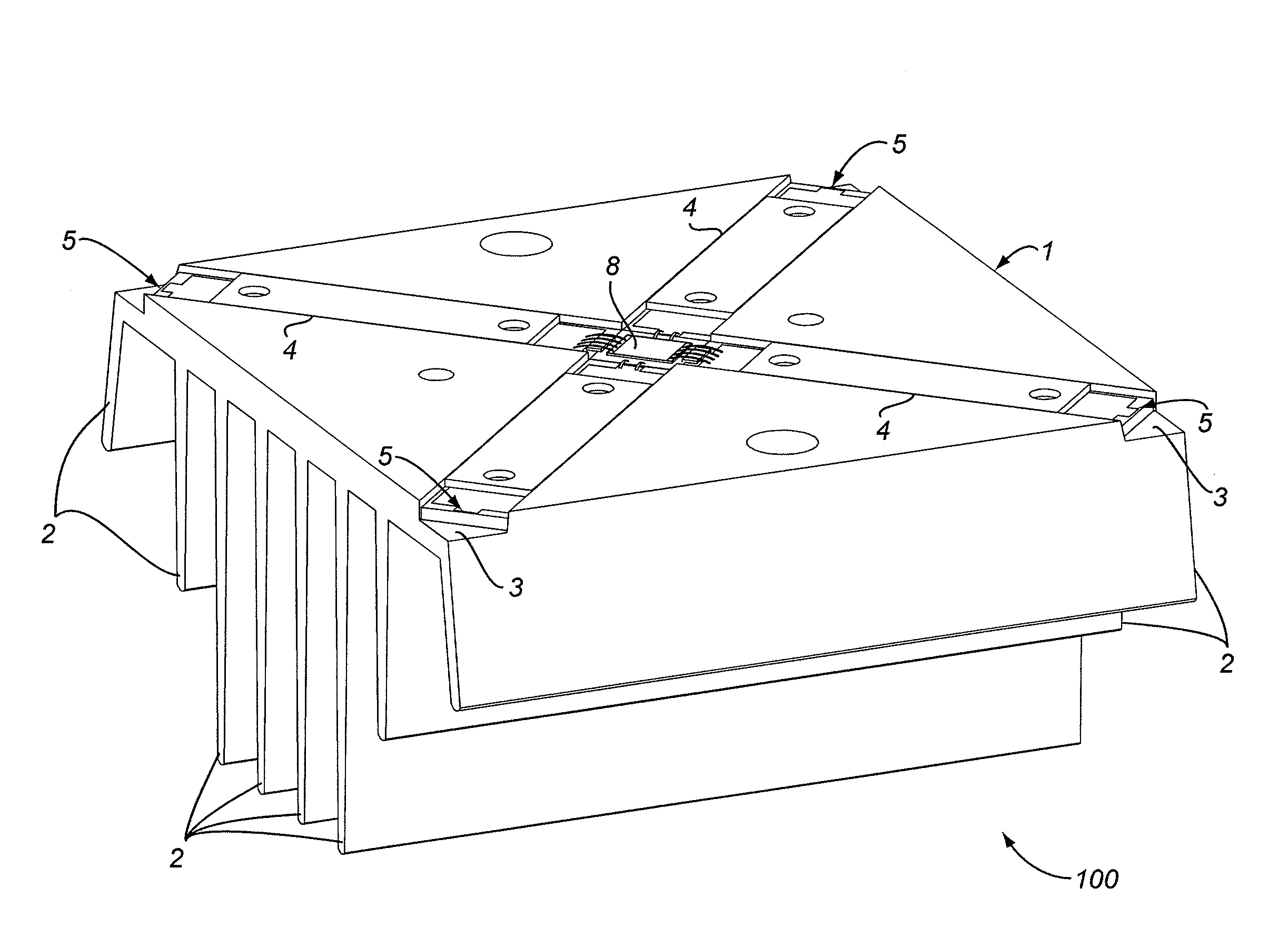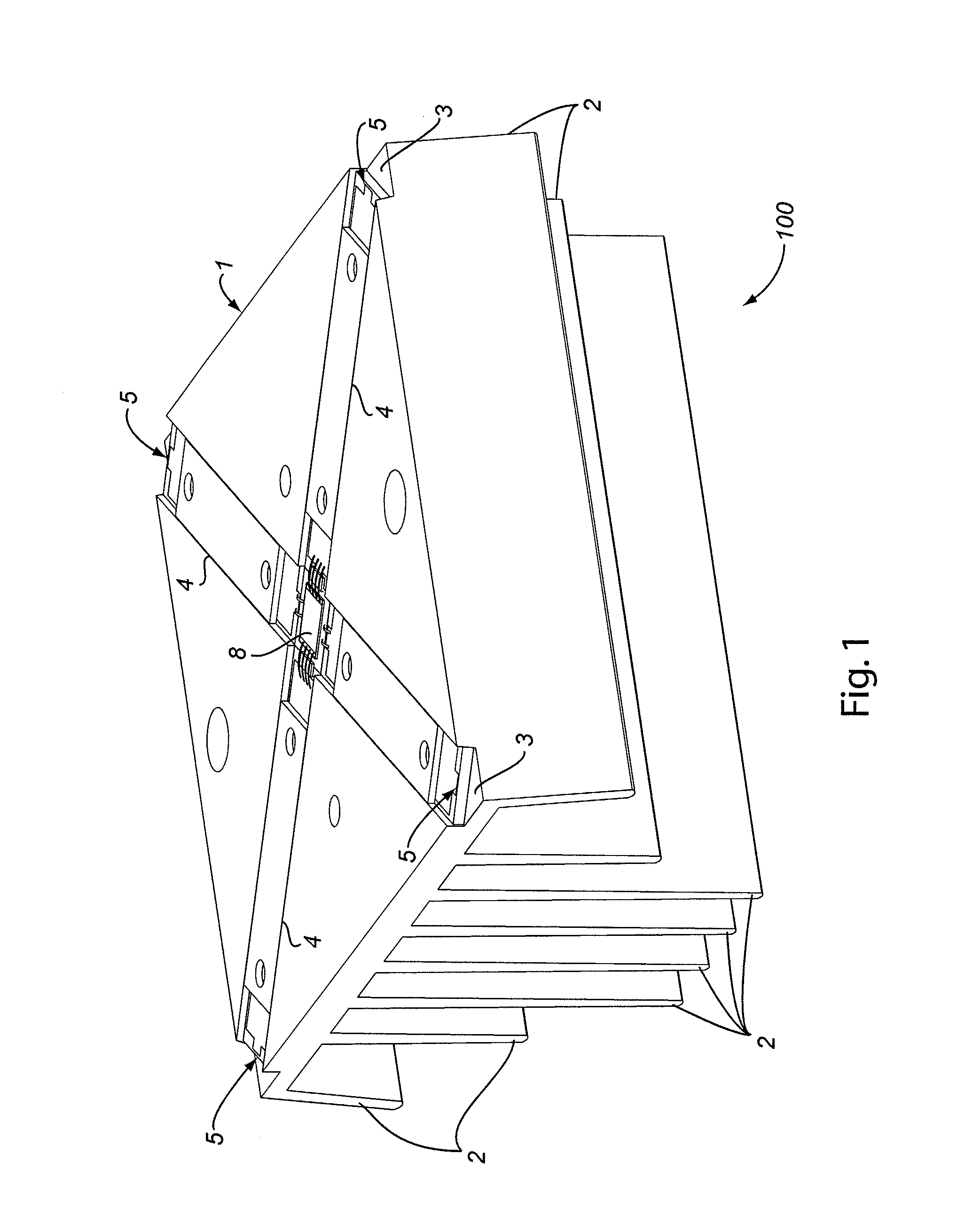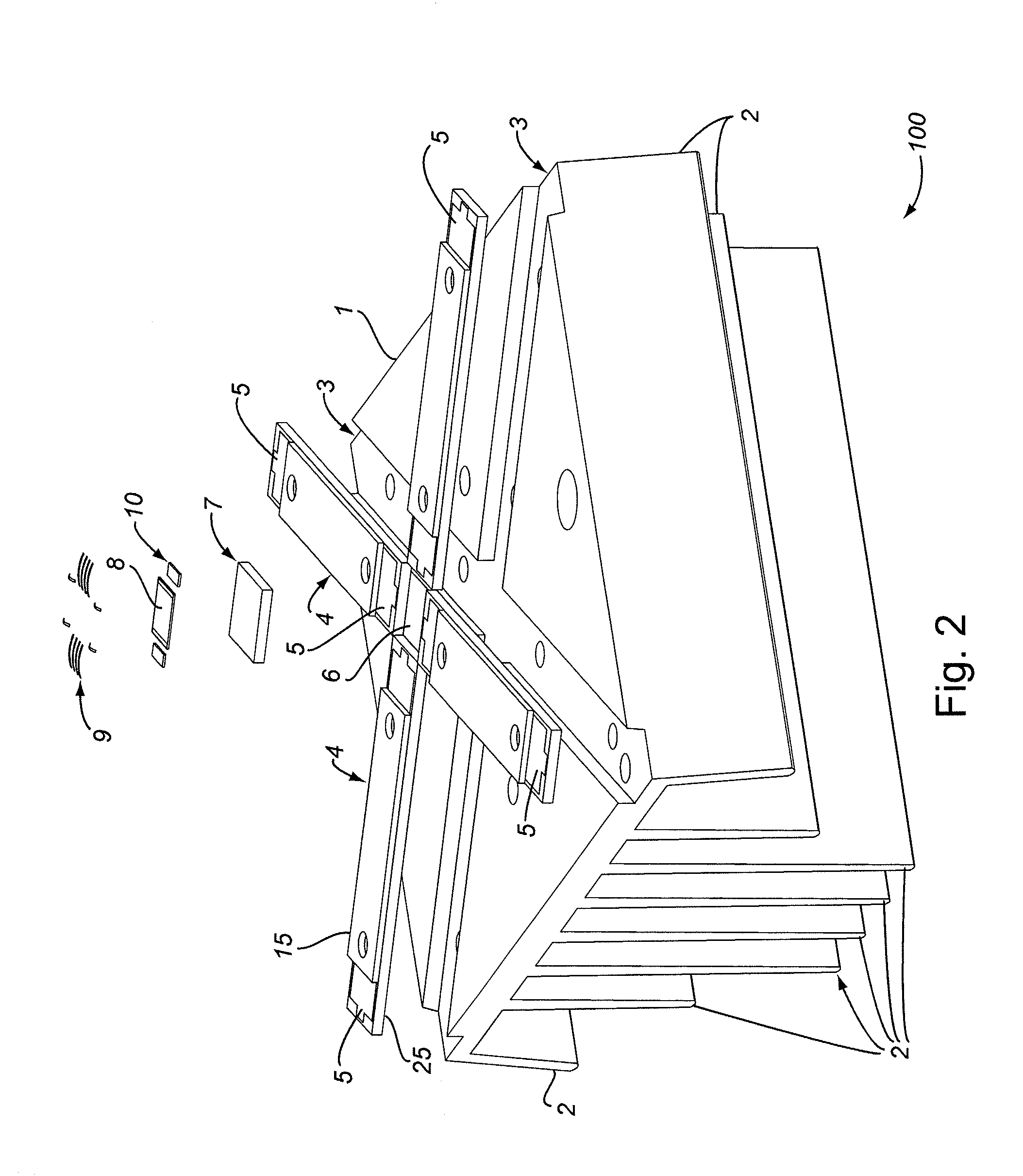Integrated semiconductor solar cell package
a solar cell and integrated technology, applied in the field of semiconductor photovoltaic device packaging, can solve the problems of high mechanical failure rate in actual use, photovoltaic device, current solar cell package design, etc., and achieve the effect of reducing the vertical profile of the device, facilitating hermetically sealing, and reducing the vertical and narrow horizontal profiles
- Summary
- Abstract
- Description
- Claims
- Application Information
AI Technical Summary
Benefits of technology
Problems solved by technology
Method used
Image
Examples
embodiments
Embedded Substrate Embodiments
[0039]Referring to FIG. 6, in this embodiment, a single extended substrate-embedded thermally and electrically conductive laminate 11 is attached within the channel 3 along one axis of the heat sink 1, while the channel 3A along the perpendicular axis contains the same conductive tripartite laminates 4 as described above (i.e., terminating proximally near the center of the heat sink). The substrate-embedded laminate 11 and the conductive laminates 4 may be affixed to the channels 3 of heat sink 1 with a variety of thermally-conductive but non-electrically conductive adhesives or mechanical connections (including e.g., epoxy resins, eutectic compositions, solder, cyanoacrylates, mechanical fasters (e.g., conductive, such as metal, or non-conductive, such as plastic), thermosonic bonding, or any combination of the above), although if electrically conductive fasteners (e.g., metal screws) are used, the fasteners must pass through non-conductive regions for...
PUM
 Login to View More
Login to View More Abstract
Description
Claims
Application Information
 Login to View More
Login to View More - R&D Engineer
- R&D Manager
- IP Professional
- Industry Leading Data Capabilities
- Powerful AI technology
- Patent DNA Extraction
Browse by: Latest US Patents, China's latest patents, Technical Efficacy Thesaurus, Application Domain, Technology Topic, Popular Technical Reports.
© 2024 PatSnap. All rights reserved.Legal|Privacy policy|Modern Slavery Act Transparency Statement|Sitemap|About US| Contact US: help@patsnap.com










